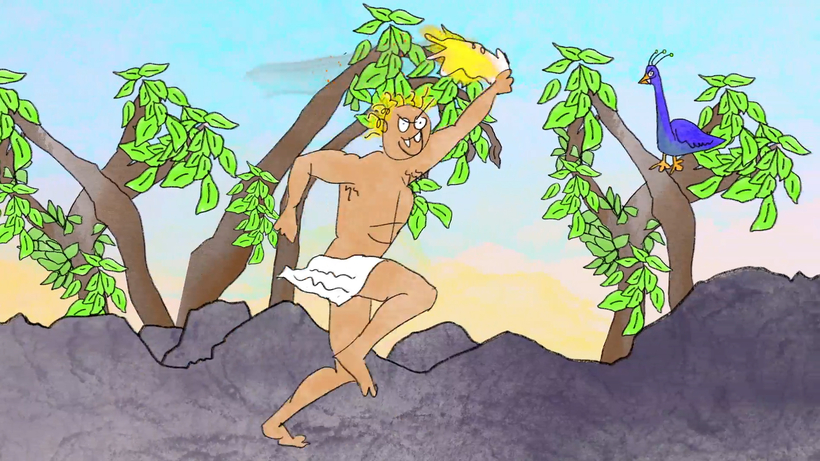For the die-hard concert fan, the trouble with multimedia is that the “added value” downgrades the music to second fiddle. Take Fantasia (1940), Walt Disney’s experimental potpourri of animations, each illustrating a concert-hall favorite. The joker in the pack is Mickey Mouse as the Sorcerer’s Apprentice of the Paul Dukas tone poem, battling a bucket brigade of brooms on the march. But, alas, poor Beethoven, whose pastoral Symphony No. 6 transports us to a marzipan Arcadia jammed with cherubs, Mr. and Mrs. Pegasus on the wing, and gauzy centaur Bachelors and Bachelorettes.
In Disney’s hands, Beethoven’s only full-length ballet score, The Creatures of Prometheus, might well have inspired more of the same. In December, a streamed pandemic special from the London-based Philharmonia went a blessedly different route. Clocking in at about an hour of prime early-middle Ludwig van, the zesty, pictorially suggestive instrumental numbers are presented straight up, with the conductor Esa-Pekka Salonen drawing tight ensemble work from capable, photogenic players spread out under the coffered vault of the ornate Battersea Arts Centre. Alternating with the music, animated storytelling segments fill us in on the action.
A snappy new script by Gerard McBurney, read by Stephen Fry, recalls how the lofty spirit Prometheus, finding the human beings of his time in a state of primal ignorance, elevated them through art, knowledge, and the laws of right conduct. (I paraphrase from surviving descriptions of the original libretto, which is lost.) A sunny Enlightenment corrective, if you like, to the Judeo-Christian myth of the Fall, culminating in an apotheosis on Mount Parnassus.

In Beethoven’s Vienna, The Creatures of Prometheus starred Salvatore Viganò, a combination Balanchine and Baryshnikov avant la lettre. Few if any choreographers have shown interest in it since. Mark Morris, who has been asked to take it on, once said, “Oh God, you’ve gotta be kidding—this is the most awful music in the world!” Morris does so love to be outrageous.
Spared the chore of matching steps and notes at a tempo not her own, the animator Hillary Leben rises gleefully to Beethoven’s scenario, her vigorous strokes of the pen bristling with satire and whimsy. No Old Master, she revels in a cartoonist’s fantasy details (snaggle-tooth Olympians, grinning snow-capped peaks) sometimes sweet, sometimes spiky.
Your classics professor will rap Leben’s knuckles for her Terpsichore, muse of the dance, hitherto female, here an undraped Apollo. The Bacchantes, known to antiquity as the embodiment of Dionysian female energy run riot, appear as an all-male chorus line in armor. As for Leben’s Promethean “creatures”—which is to say, Platonically speaking, you and me—they pose an enigma, too. At first blush, they look less like human beings than half-formed, clay-colored gingerbread people. And so they remain, even when touched with the fire of heaven and tutored in the arts. In Leben’s vision, it’s the gods who look human.
The Creatures of Prometheus is available to stream on the Philharmonia Web site
Matthew Gurewitsch writes about opera and classical music for AIR MAIL. He lives in Hawaii

